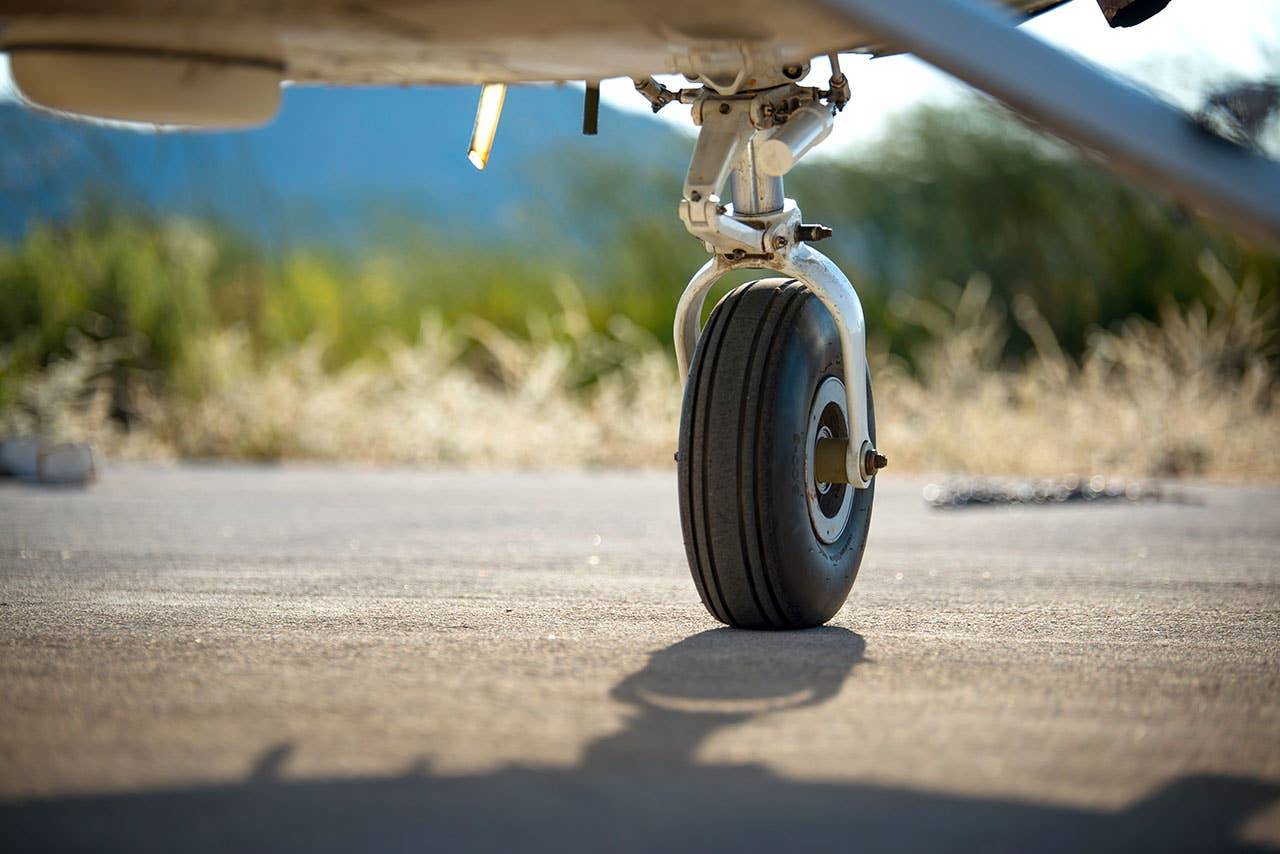Nosewheels, Everything You Ever Wanted To Know
The good old nose-mounted landing gear doesn’t get much respect. But it should.

A critical component of an aircraft is its landing gear, which is either in the tricycle or conventional configuration. In addition to the wheels located on either side of the fuselage, known as the main landing gear, just about every plane has either a wheel beneath the nose or one beneath the tail. These aircraft are commonly referred to as nosewheel or tricycle landing gear planes and taildraggers, respectively.
Taildraggers tend to get most of the glory in the aviation world, with many pilots adamantly claiming they are the superior aircraft to fly. However, most modern aircraft have nosewheels. This is primarily because the tricycle landing gear configuration provides better visibility for pilots during taxiing, takeoff and landing and handles better overall than taildraggers, especially in crosswinds. Because of this and nosewheels' reputation for being incredibly forgiving, the majority of pilots learn how to fly in nosewheels, such as the Cessna 172 or Piper Cherokee.
So, despite the fact that the tailwheel configuration is known as the "conventional" gear option, these days, it's really the other way around.
First Known Nosewheel Design: French Gastambide-Mengin monoplane (Antoinette II), 1908
Actual Number Of Wheels: Four, two in front and two in back
Horsepower: 50
Furthest Flight: 492 feet
Biggest Advantages Of Nosewheel Aircraft: Greater visibility during taxi, takeoff and landing; less likely than taildraggers to nose-over when braking; better crosswind handling
Downside: Prone to wheelbarrowing
Additional Downside: Loss of street cred from taildragger pilots!
Two Primary Types: Steerable, non-steerable
How Steerable Works: Ground steering (usually) via rudder pedals controlling nosewheel
Non-Steerable: Ground steering via differential braking
Easiest To Handle While Taxiing: Steerable
Disadvantage: Heavier, more complex system, more maintenance
First Steerable Nosewheel Design: Waterman Whatsit, 1929
Reason It Was Designed: For regular citizens to take off and land from their own street
Nickname: "Model-T for the Air"
Reason It Was Scrapped: Unstable
When Nosewheels Boomed In Popularity: Post-World War II
Most Produced To-Date: Cessna 172
Total: >44,000
Reason Jet-Powered Aircraft Are Primarily Nosewheels: All of the above, plus it keeps hot jet blasts from damaging runway and taxiway surfaces
Year Commercial Airliners Fully Transitioned To Nosewheels: 1942
Key Advantages: Easier passenger boarding and luggage loading, better visibility for pilots
Last Commercial Taildragger: Douglas DC-3
Total Produced Worldwide: ~16,000
Commercially: 607
Still Regularly Flying As Of 2021: ~170
Reason It Was So Popular: Incredibly reliable
Additional Reason: Fun to fly!
Aircraft Designed To Be Its Nosewheel Replacement For Commercial Flights: Convair CV-240
Commercially Produced: 1,181
Entered Into Service: 1948
Airline: American Airlines
Advantages Over The DC-3: Pressurized, more seating, more powerful engine
Criticisms: Less aesthetically appealing, less reliable, costlier
Longest-Living DC-3 Nosewheel Replacement: Fokker F27 Friendship fleet
Maiden Flight: Nov. 19, 1958
Years Produced: 32
Key Perk Over The DC-3: Quieter, less vibration
Reason: Rolls-Royce engine
Still The Most Popular Commercial Airliner Ever In History: DC-3
Most Mass-Produced: DC-3
Taildragger Pilots Surprised: 0
Interested in more Plane Facts? Learn how much flying costs.

Subscribe to Our Newsletter
Get the latest Plane & Pilot Magazine stories delivered directly to your inbox






